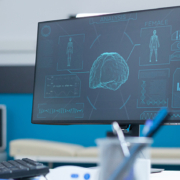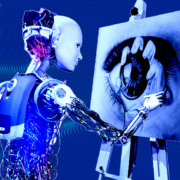Anomaly Detection in Video & Image Classification
We’re seeing and doing all sorts of interesting work in the Image domain. Recent blog posts, white papers, and roundtables capture some of this work, such as image segmentation and classification to video highlights. But an Image area of broad interest that, to this point, we’ve but scratched the surface of is Video-based Anomaly Detection. It’s a challenging data science problem, in part due to the velocity of data streams and missing data, but has wide-ranging solution applicability.

In-store monitoring of customer movements and behavior.
Motion sensing, the antecedent to Video-based Anomaly Detection, isn’t new and there are a multitude of commercial solutions in that area. Anomaly Detection is something different and it opens the door to new, more advanced applications and more robust deployments. Part of the distinction between the two stems from “sensing” what’s usual behavior and what’s different.

Walkers in the park look “normal”. The bicyclist is the anomaly.
Anomaly detection requires the ability to understand a motion “baseline” and to trigger notifications based on deviations from that baseline. Having this ability offers the opportunity to deploy AI-monitored cameras in many more real-world situations across a wide range of security use cases, smart city monitoring, and more, wherein movements and behaviors can be tracked and measured with higher accuracy and at a much larger scale than ever before.
With 500 million video cameras in the world tracking these movements, a new approach is required to deal with this mountain of data. For this reason, Deep Learning and advances in edge computing are enabling a paradigm shift from video recording and human watchers toward AI monitoring. Many systems will have humans “in the loop,” with people being alerted to anomalies. But others won’t. For example, in the near future, smart cities will automatically respond to heavy traffic conditions with adjustments to the timing of stoplights, and they’ll do so routinely without human intervention.

Human in the loop.
As on many AI fronts, this is an exciting time and the opportunities are numerous. Stay tuned for more from BigR.io, and let’s talk about your ideas on Video-based Anomaly Detection or AI more broadly.









